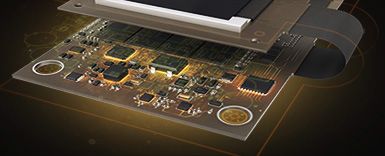How to Automate Your Component Management Process

How many times have you found yourself deep in a project, only to find that one of the main components is on backorder, or, worse yet, is in obsolescence? This happens to engineers every day, but it doesn't’ have to. Read to learn more about automating your component management process.
How many times have you found yourself deep in a project, only to find that one of the main components is on backorder, or, worse yet, is in obsolescence? How many subsequent sleepless nights have you spent digging through distributor websites for a suitable replacement? This happens to engineers every day when they aren’t working from a centralized and verified database of components.
Traditional Component Management Approaches
For schematic or footprint models, the traditional approach is to use library files, version control, and database libraries. Although these methods work, they only provide a method of updating directly from a library. They don’t provide any direct method of finding out if a component is depreciated or out of date. Can you answer these questions?
-
How do I know what components are still available for my design?
-
How do I know if a new component has enough stock for my production order?
-
How do I know if a component has been modified by another engineer?
All these questions and more can be answered with the Unified approach to component management.
A Unified Approach to Component Management
The Unified Component Model consists of several revisions of items, which include the graphical symbol, footprints, other models, and supply chain information. If any of these associated items making up the unified component are updated or modified, the item will be assigned a new revision. This would in turn require the unified component’s revision to be updated, in order to use the new modified items. This goes a step beyond just version control, providing revisions and lifecycles that can be checked against used components in a design.
Download our free Design Data Management whitepaper today to learn more about automating your component management process with the Unified Component Model.
About Author
About Author
Sam currently serves as the Director of Technical Marketing at Altium and has grown throughout the company in a variety of positions over the past 15 years. He started his journey in engineering at Sony as a Mechanical Engineer, and has held positions in board design, sales, and product management at various organizations.
Related Resources
Related Technical Documentation
Table of Contents
Altium is transforming the electronics industry so thoroughly that our web pages need a minute to catch up. For a short time, some information on this page may be outdated.
We appreciate your patience. It will be worth the wait!
Learn More
Try Altium Designer
Which best describes you?
Try Altium Designer
Which best describes you?
 Back
Back
 Back
Back










